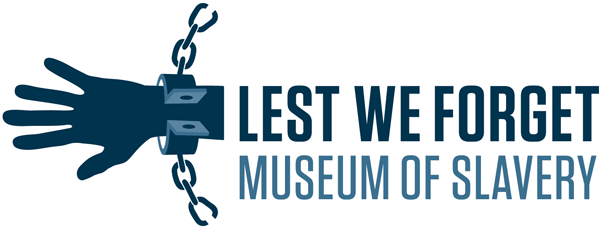Founded by J. Justin and Gwen Ragsdale in 2002, the Lest We Forget Museum of Slavery (LWF) is considered to be the only museum in the Philadelphia, Pennsylvania area that contains artifacts utilized during the Trans-Atlantic slave trade. Also known as the Lest We Forget Black Holocaust Slavery Museum, this institution was created by the husband-and-wife collectors who passionately share their private collection of more than 1,800 items with the public.
Located at 5501 Germantown Avenue, the founders’ vision, as per the museum’s website, is to “channel the strength and perseverance of African ancestors and exemplify the legacy of their greatness.” LWF has been housed at the Germantown Historical Society, operated by Historic Germantown, since Autumn 2018.
For fifteen years prior to the move to this present site, Lest We Forget Museum of Slavery operated at 3650 Richmond Street. In 2017, the Ragsdales were forced to close their doors at that site. Reasons given to the couple for this closure ranged from gentrification of the area, which became approximately 60 percent White populated; dramatic increase in property taxes; inability to gain consistent institutional, philanthropic and financial support to sustain and update the site; and even the founders’ status as private collectors, as opposed to museum professionals.
Fortunately, those “reasons” have not deterred the Ragsdales in continuing to curate and promote their powerful and critical work. Their mission to “utilize our rare collection to educate and increase awareness of the impact of slavery and its continued effect on American society” is always at the forefront of their active involvement to enlighten the public.
J. Justin Ragsdale has spent almost fifty years acquiring materials to greater understand and educate others on the complex system of slavery. The mission and vision of the founders, also stated on their site, are centered upon learners understanding that “African slavery was the longest and most absolute involuntary form of human servitude known to man. The torture was both physical and psychological on every level. Slave life was totally centered on creating wealth for the slave owners and caring for their land and families. No system of slavery was ever more brutal and dehumanizing than the race-based of the Trans-Atlantic slave trade.” Unlike other ethnic groups who, en masse, chose to immigrate to America, many persons of African descent were enslaved and forced to build what would become the United States. The enslavement of Africans and African-Americans was perpetual, barbaric and destructive.
Items which the Ragsdales have on exhibit that speak to this centuries-long, brutal experience contain personal narratives of enslaved and freed persons of African descent in America. They also include the cruel items of human bondage and punishment, such as branding irons, chains and shackles; primary documents that detailed sales of Blacks; and racist memorabilia, including the garb of a Ku Klux Klansman, of the Jim Crow era that negatively depicted Blacks.
With the goal to “Bring History Alive”, J. Justin Ragsdale recalled first becoming interested in African-American history as a small boy visiting his relatives down south. In “The Port Richmond Slavery Museum You Never Heard Of is Now Searching for a New Home” article, written by Valerie Russ for The Philadelphia Inquirer, Ragsdale recalled visiting his relatives in Rock Hill, South Carolina. He was fascinated by a trunk that his Uncle Bub warned him from opening. His uncle often referenced a man he called “Massa” who sent Bub to be a soldier in The Civil War. After his uncle, at 109 years old, passed away, Ragsdale, who was an adult at that point, opened the trunk. To Russ he accounted finding “a Confederate uniform jacket and an ‘iron ball shackle’, designed to clamp around a mean’s neck with a 20-pound weight that hung down to his groin – incentive to keep him from running away.”
The Ragsdales personally operate the institution, from curating, consulting and educating to marketing and touring. Because of this, appointments for tours are required; appointments may be reserved via telephone or email. The museum is open, Tuesday through Saturday, 10 am to 6 pm and on Sunday, 12 pm to 5 pm.
Also available from the founders is the museum’s traveling exhibit, which features African art, signs of segregation and vintage photographs. They are available to travel throughout the United States as well as the Caribbean. Audiences they can accommodate include school groups, universities, family reunions, churches and conferences. They also are available to present at community events and celebrations, such as Black History Month and Juneteenth. Additionally, items may be negotiated for loan to museums and cultural centers.
Products available for purchase include booklets; books such as Peculiar Relationships, written by Gwen Ragsdale; and award-winning documentaries, Lest We Forget, that feature the Ragsdales, and My Slave Sister, My Self.
As stated by the founders, J. Justin and Gwen Ragsdale, the Lest We Forget Museum of Slavery illuminates the “dark and tragic period in American history and pays tribute to the generations of slave ancestors who greatly contributed to the building of America.”
